Borlotti bean seedlings, started off in root trainers.
After a long spell of unseasonably dry weather in April, rainfall finally arrived in mid-May. Although it didn’t rain every day in May, the rainfall that we had was extremely heavy, making May wetter than the seasonal average. Average daytime temperatures were slightly below the seasonal average. Average night time temperatures were much cooler than the seasonal average. Consequently, soil temperatures struggled to rise in May; a propagator was a must for seed germination.
May was also a rather windy month, with gusts of up to 50mph on some days. This certainly played havoc with some of the earlier crops that we planted. Fortunately the pea plants were fairly well established and sheltered, however, we’re now on to the second sowing of runner beans and borlotti beans!
During April we enjoyed the most glorious blaze of blossom across all the fruit trees, the blossom has turned into this………….
Yellow gage
The yellow gage tree has many gages, okay they’re mainly on one branch with a few other fruits scattered around the tree, but it’s definitely an improvement on last years crop. Last year we harvested about a dozen gages.
Yellow gage, Orchard plot
Cherry tree
Cherries
The cherry tree has a good crop of cherries this year. We’re still unsure if it’s a sweet or sour cherry tree, so we decided to net the tree to protect the fruit from the birds that usually strip it bare.
Cherry tree with a ‘hair-net’
Pears
Large pear tree, orchard plot
The sickly large pear tree has only a small number of pears this year. There are no obvious signs of rust, so far, but the tree has sustained serious wind burn during the gales. It’s not a good year for this tree.
In contrast, I don’t think it’s possible for a little pear tree to pack any more pears than this on its branches…. it’s on overload!
Small pear tree, orchard plot
Fortunately a decent amount have fallen from the tree during ‘June Drop’, which has thinned them out naturally.
June drop, small pear tree.
Blackcurrents
There is a bountiful supply of blackcurrents on the plot 4. We’ve netted the plants to protect them from the birds.
Blackcurrents, plot 4
Redcurrents
We added three redcurrent plants on plot 2 in May.
We decided to make the back of this plot into a soft fruit section.
Ripening redcurrents, plot 2
Gooseberries
After the disappoint of last years gooseberry crop (we harvested only 12 over sized, extra plump gooseberries), we’ve added gooseberry bushes to all plots. We planted four gooseberry bushes on plot 2 and a further three bushes on the orchard plot. The gooseberry bushes on plot 1 are now three years old and seem to be cropping well.
Gooseberry bush, plot 1
Even the young gooseberry bushes on plot 2 and orchard plot are laden with fruit.
Gooseberry bush Invicta, plot 2
Raspberries
The raspberry canes that we planted on plot 2 have sprung into life, there’s foliage everywhere.
Raspberry canes, Malling Admiral, Plot 2
Vegetables
This is what’s going on with the vegetable plants
Peas
The Champion of England pea plants have rampaged up the canes.
Champion of England pea plants, plot 1.
The plants are now flowering and we have some peas forming.
Champion of England pea plants, plot 1
Pea plants are thirsty plants and required plenty of water at this stage of their growth. I’ve found the best time to water is in the morning. If watering in the evening or at night, the moisture isn’t always fully absorbed. The residue moisture tends to attract pesky pests such as slugs and snails, which we certainly don’t want.
Jerusalem Artichokes
We planted some Jerusalem artichoke tubers on the Orchard plot and plot 4. Nothing emerged at all on plot 4, and only three plants have appeared on the Orchard Plot. Snails love to eat the emerging foliage, it’s a snaily delicacy. To protect these plants we’ve used a good amount of Slug Gone wool pellets around the base of the plant. We’ve found these organic wool pellets to be quite effective against slug and snail attack.
Jerusalem artichokes are part of the sunflower family and they grow tall, they can reach as much as 10ft. We will provide a stake to support them when they are a little taller.
Jerusalem Artichoke plants, Orchard plot.
Garlic
All the garlic plants have rust, so we’ve tried to manage the problem rather than just dig out the plants. In the picture above, you can see we’ve trimmed the garlic plant leaves. In fact we’ve cut away the infected leaves three times now . The bulbs are still fairly immature, so we will leave the garlic plants in the ground for another few weeks. If there’s no improvement during this period we will simply remove the plants.
Garlic, Orchard plot. The bulbs are still relatively immature.
Early Purple Sprouting broccoli
On plot 2 we’ve planted eight early purple sprouting broccoli plants. We’ve netted them to protect them from the wood pigeons and the cabbage white butterflies.
Early purple sprouting broccoli, plot 2
Celeriac
We’ve decided to grow celeriac instead of parsnips this year. We’ve planted 16 on plot 1 and a further 10 plants on plot4. The last time we grew celeriac it was a disaster. They split and the root failed to grow to any decent size. Hopefully, this time, with more knowledge, it will be different. I shall be writing a piece about growing celeriac shortly.
Celeriac, plot 1
Chickpeas
Chickpeas are our experimental crop of the year. We’ve planted 8 chickpea plants on plot 2.
Chickpea plant, plot 2.
Runner beans
Runner beans have to be one of my favourite vegetables from last year. I froze loads and enjoyed that true bean flavour well into the winter. I’d love to do the same again this year. We bought loads of 7ft canes and we’ve dotted wig-wams across all the plots.
Sadly the runner beans that I grew from seed, Enorma and Firestorm, were brutally and terminally injured by those ferocious gales. As a stop gap, I got these runner bean plants from the garden centre, they’re a variety called Streamline.
Back at home, I’m growing some more from seed. This time we’ve chosen three new varieties to try, all of which have RHS Award of Garden Merit. We’ve chosen Wisley Magic, White Lady and Benchmaster. The seeds are yet to germinate!
Streamline runner bean plants, orchard plot
Onions
Last year we grew some Red Baron onions from seed. Whilst onions are readily available and reasonably cheap in the shops, these onions were totally fabulous.
We prefer to grow onions from seed rather than from a set because we noticed that onions grown from seed tend to be more bolt resistant than onions grown from set.
Onion seedlings, grown at home in small trays.
We’re growing two varieties, Long Red Florence and Record Rosso Tondo Tropea, or translated into English, round red onion! I have a few Red Baron seedlings at home too, but the germination rate poor this year which is why we’ve mainly got the other two varieties. We will be plant the red baron onion seedlings out shortly.
We planted the long red Florence and Record Rosso Tondo Tropea seedlings around 4 weeks ago, on plot 4. They have been slow to settle in but they are finally beginning to grow.
Record Rosso Tondo Tropea onion seedlings, plot 4
And finally,
Angelica
Angelica, plot 1… the healthy one!
Last year we bought some small angelica plants from the garden centre. I had this vision of candying the stems and making 1970’s cake decorations. However, there’s also the pure architecture of the plant, I think it’s a wonderful addition to the allotment.
One thing I didn’t realise was that slugs and snails are truly fond of the foliage, those small plants were demolished within a couple of days. So this year, I spotted some much larger, truly hefty plants at Harborough Nurseries, surely these would be slug and snail proof… I got two! They’ve been in a couple of weeks now, one has survived, the other however has been severely nibbled and is looking rather sad. I’ve now surrounded both plants with wool pellets just to be on the safe side.
I was checking for slugs and snails when I noticed one of the leaves on the healthy plant had discoloured. I turned it over and this is what I discovered…
Parsnip moth caterpillars, angelica plant!
The parsnip moth caterpillars have moved in and made themselves at home. The leaf was removed and the caterpillars destroyed. Both parsnips and angelica belong to the apiaceae family…. as do the celeriac plants. Yikes! Will be carefully checking the leaves of the celeriac plants.




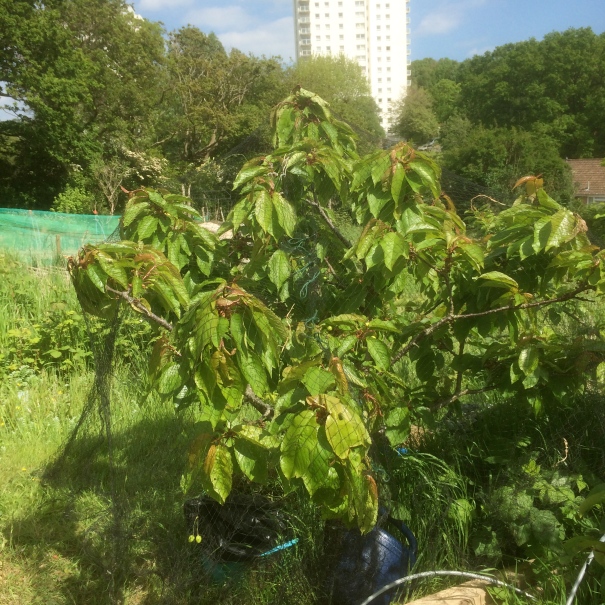
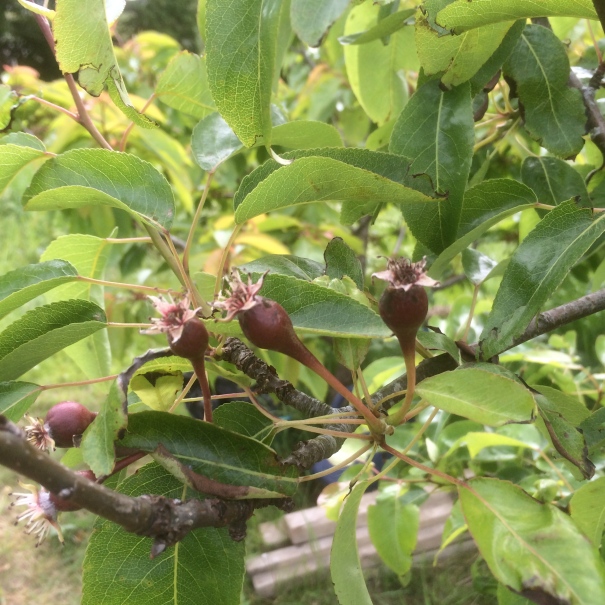
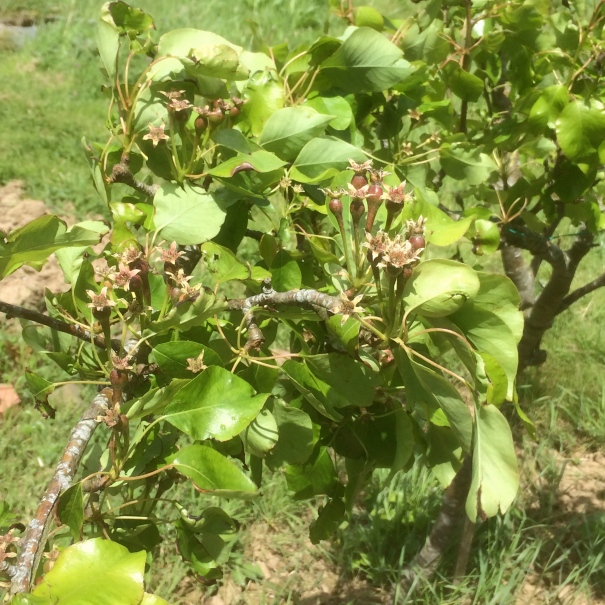




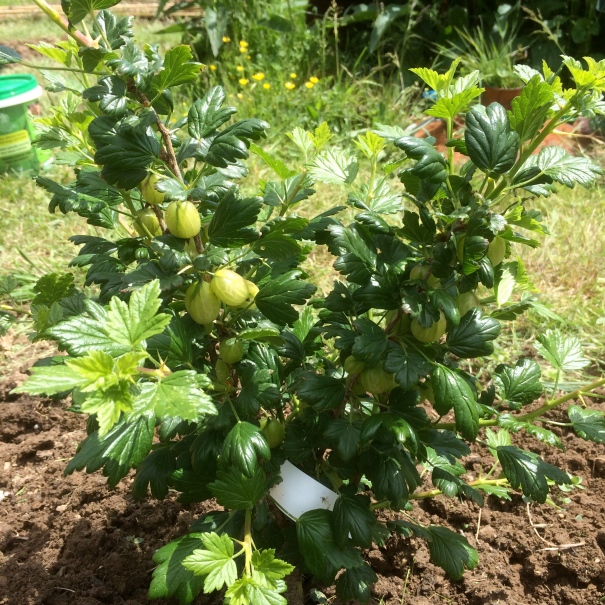






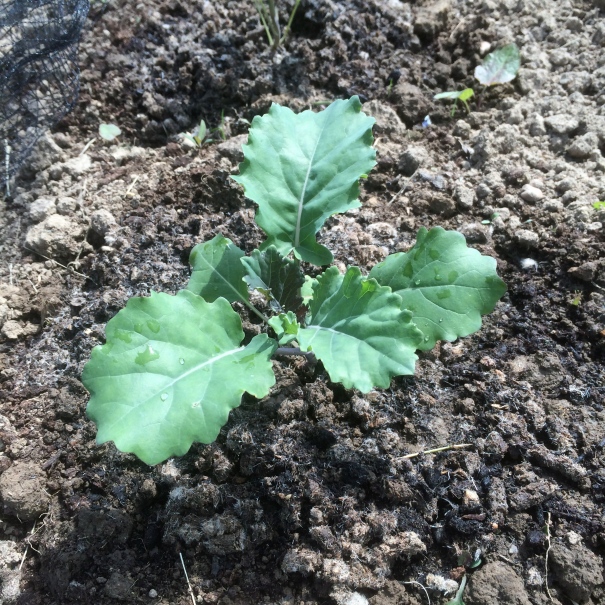

















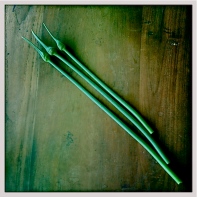






Leave a comment